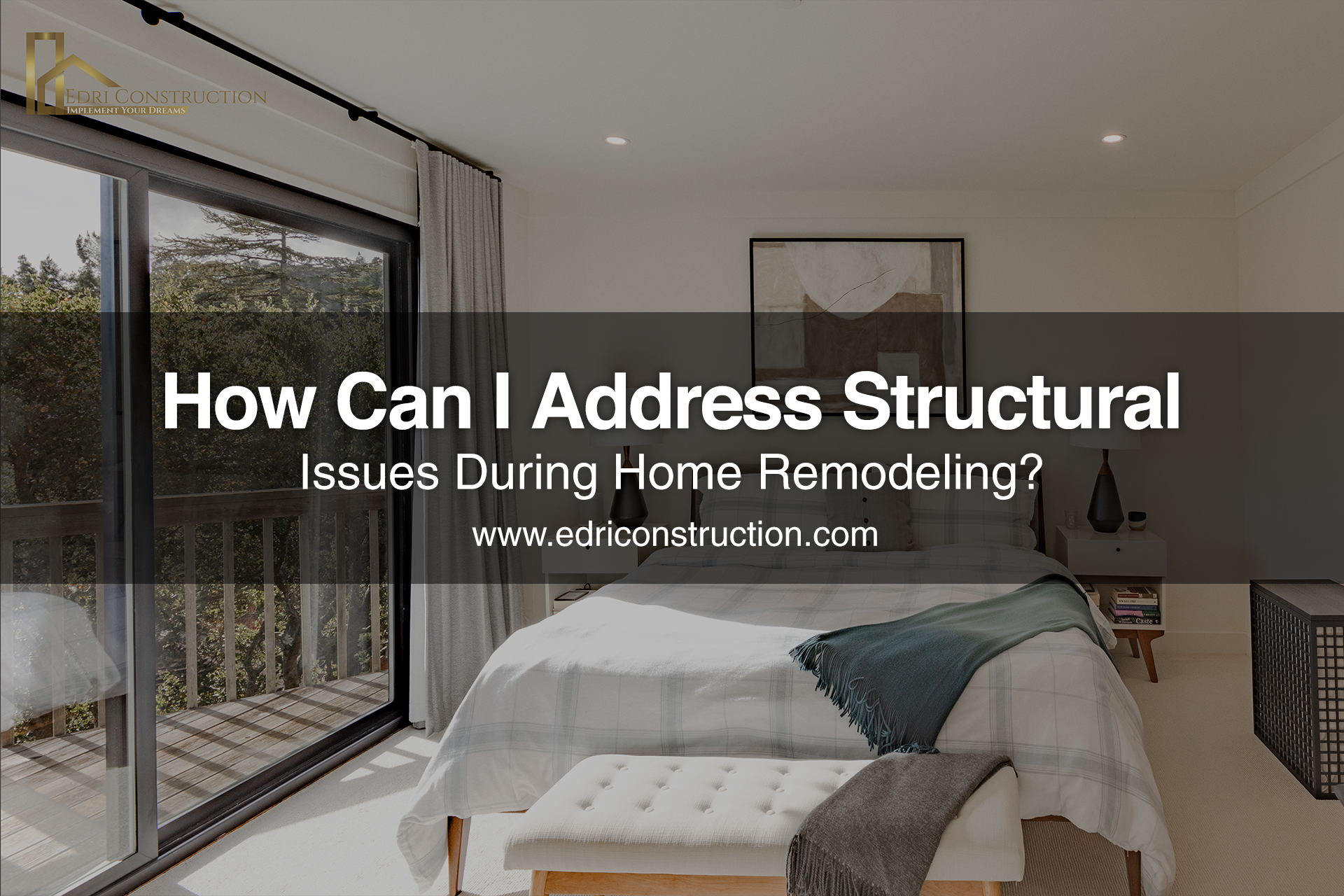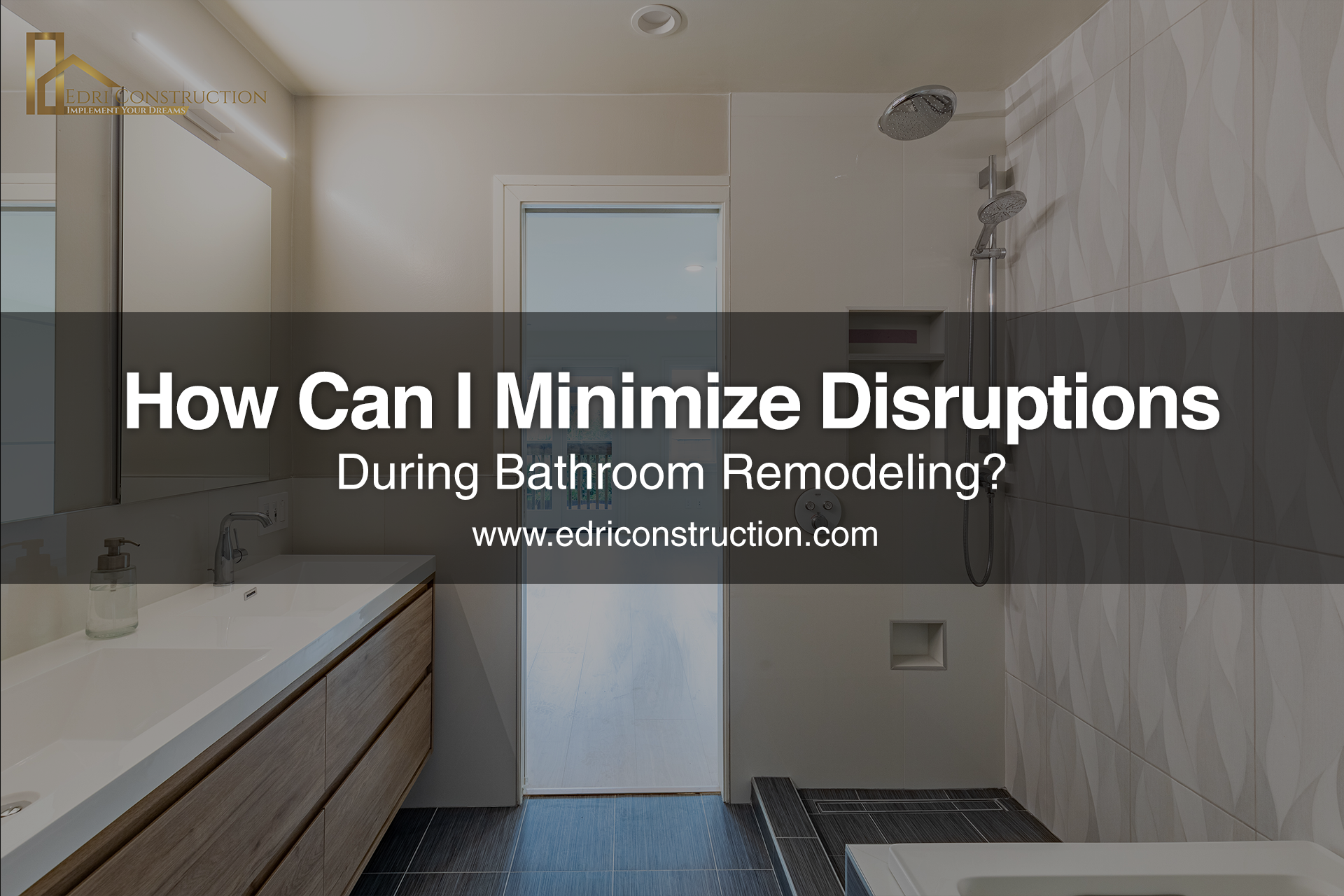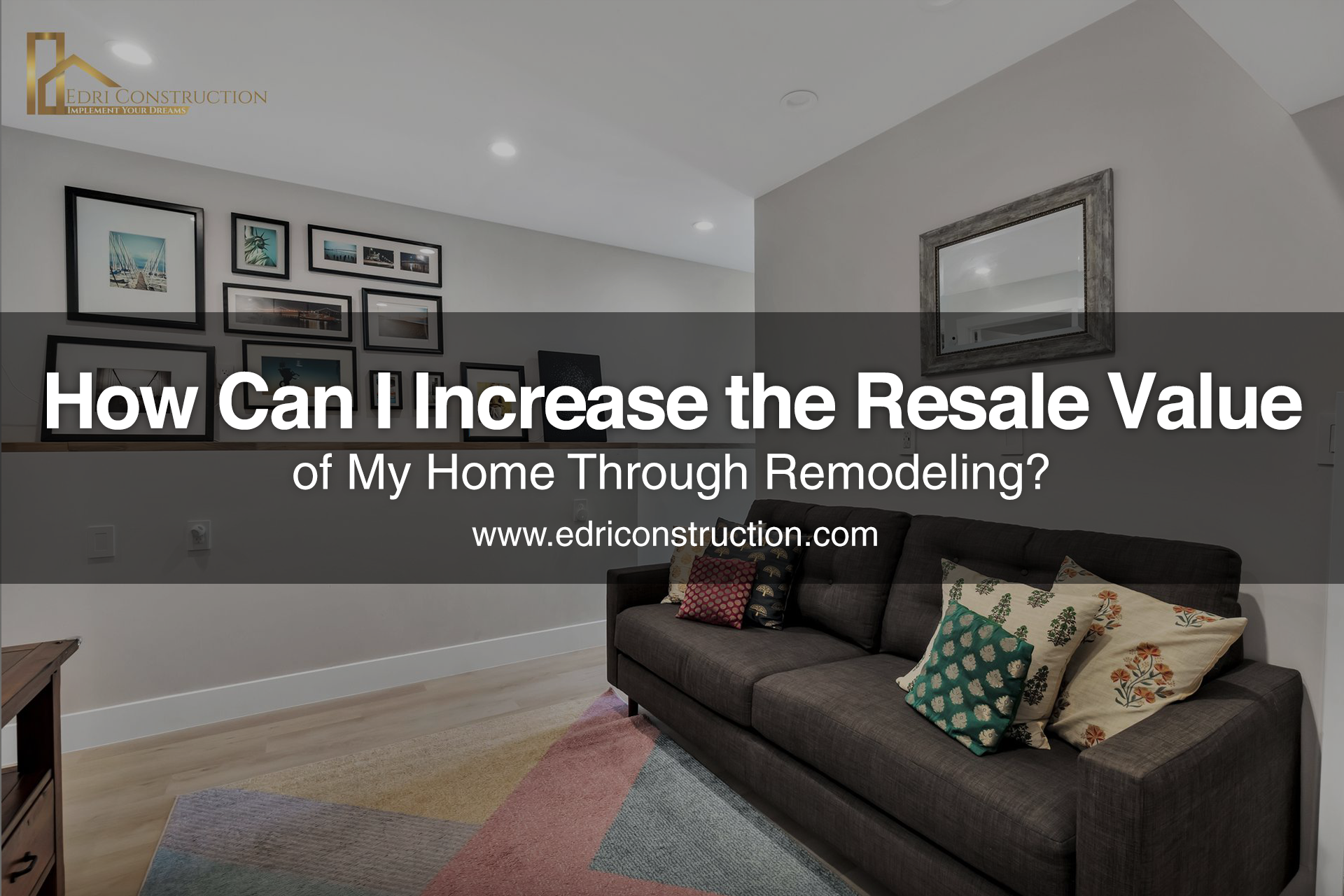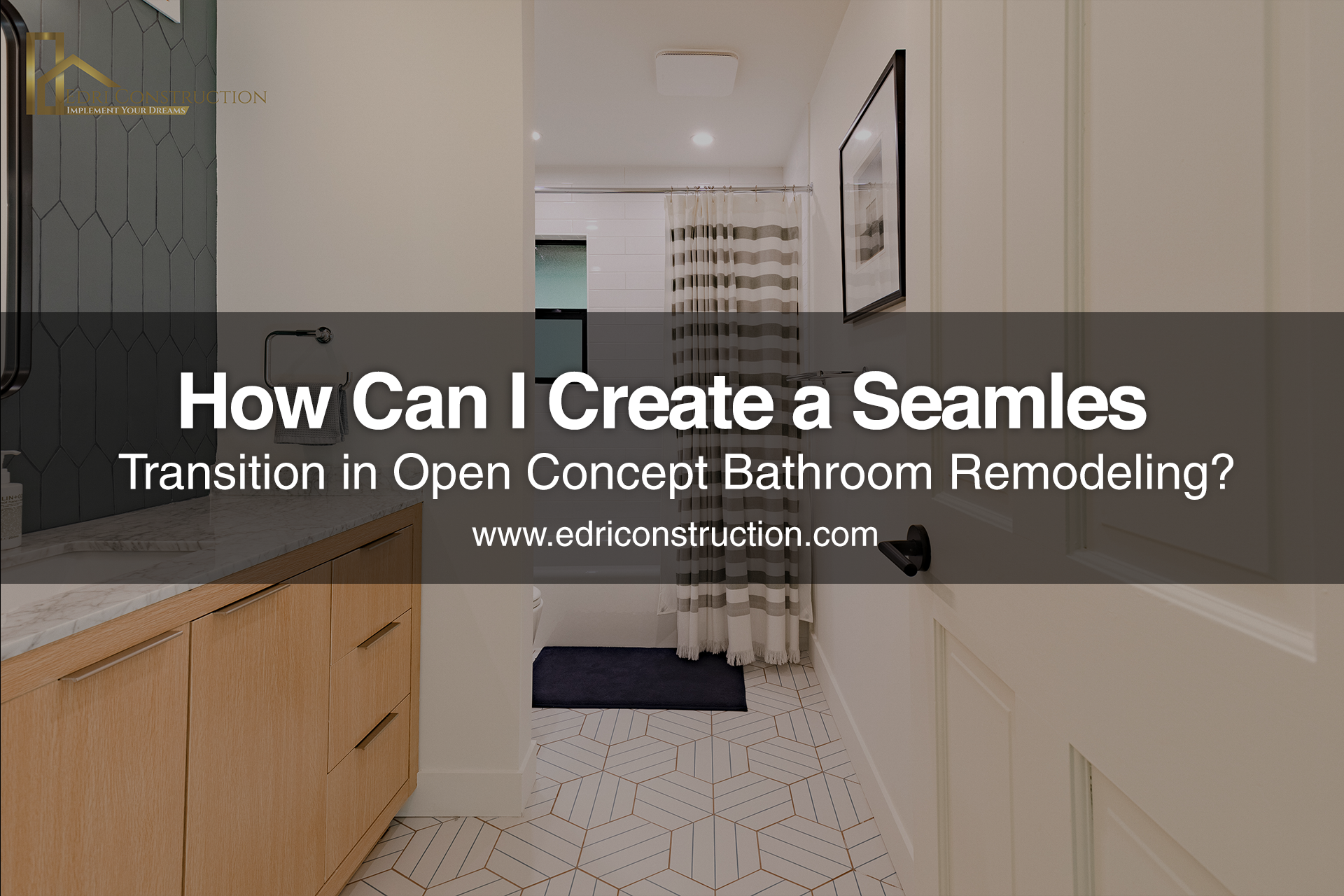What Are the Benefits of Aging-in-Place Features in Home Remodeling?

INTRODUCTION
In the realm of home remodeling, a significant shift is underway, one that prioritizes longevity and comfort over fleeting trends. This shift is propelled by the integration of aging-in-place features, revolutionizing the concept of home renovation. These features offer a plethora of benefits that cater not only to seniors but to individuals of all ages seeking enhanced accessibility and convenience.
Aging-in-place features are designed with the aim of allowing individuals to remain in their homes comfortably and safely as they age. These features encompass various aspects of home design and functionality, ensuring that the home can adapt to the changing needs of its occupants over time.
One of the key benefits of integrating aging-in-place features is improved accessibility. Features such as wider doorways, lever-style door handles, and zero-threshold entries make it easier for individuals with mobility issues to navigate the home. Additionally, installing grab bars in key areas like bathrooms and stairwells provides added support and stability, reducing the risk of slips and falls.
Moreover, aging-in-place features enhance convenience and functionality for all occupants of the home. Features such as curbless showers with built-in seating, adjustable countertops, and lever faucets make daily tasks more manageable, regardless of age or ability. These features promote independence and allow individuals to maintain their quality of life without compromising on comfort.
Furthermore, integrating aging-in-place features can increase the value of the home. As the population continues to age, the demand for homes with accessible features is expected to rise. Homes that are already equipped with aging-in-place features will appeal to a broader range of buyers, potentially leading to a higher resale value in the future.
Understanding the Shift Towards Aging-in-Place Features

Gone are the days when home remodeling was solely about aesthetics or increasing property value. Today, homeowners are recognizing the importance of creating spaces that can adapt to their evolving needs as they age. With the aging population on the rise, there is a growing demand for homes that prioritize safety, accessibility, and comfort.
In the past, home remodeling projects often focused on cosmetic upgrades aimed at enhancing the visual appeal of the property or increasing its market value. While these goals are still important to many homeowners, there is a noticeable shift towards considering the long-term functionality and usability of the space.
One of the driving factors behind this shift is the aging population. As people live longer and healthier lives, there is a greater emphasis on aging in place – the ability to remain in one's own home comfortably and safely as they grow older. This has led to an increased awareness of the importance of designing homes that can accommodate changing mobility and accessibility needs.
As a result, more homeowners are incorporating aging-in-place features into their remodeling projects. These features are designed to make homes more accessible and user-friendly for individuals of all ages and abilities. Examples include wider doorways and hallways to accommodate mobility aids like wheelchairs and walkers, lever-style door handles that are easier to operate for those with limited dexterity, and zero-step entries to eliminate trip hazards.
Home remodeling sites
Fortunately, the internet has revolutionized the way we approach home remodeling, making it easier than ever to explore options and embark on renovation journeys. With a wealth of resources available online, homeowners can now access inspiration, guidance, and professional assistance with just a few clicks.
Home remodeling sites play a crucial role in this process, serving as virtual hubs where homeowners can discover ideas, gather inspiration, and connect with reputable contractors. Platforms like Houzz, Pinterest, and HomeAdvisor have emerged as go-to destinations for those seeking to transform their living spaces.
Houzz stands out as a comprehensive platform that offers a vast array of home remodeling ideas and inspiration. Users can browse through millions of photos showcasing different styles, trends, and design concepts. From kitchen renovations to bathroom makeovers, Houzz provides endless inspiration to help homeowners visualize their dream spaces.
Similarly, Pinterest has become a popular destination for homeowners seeking creative inspiration for their remodeling projects. With its visually-driven interface, Pinterest allows users to discover and save ideas for everything from home décor to DIY projects. Whether you're looking for color schemes, furniture layouts, or landscaping ideas, Pinterest offers a treasure trove of inspiration curated by users from around the world.
Enhanced Safety and Accessibility

In the realm of home remodeling, there's a growing recognition of the importance of incorporating aging-in-place features. These features not only enhance the aesthetics of a space but also prioritize safety and accessibility, making them essential elements in any renovation project.
One of the primary benefits of integrating aging-in-place features is the enhanced safety they provide. For seniors or individuals with mobility issues, navigating a home can be challenging, especially if it's not equipped with the necessary safety features. By incorporating elements like grab bars, slip-resistant flooring, and widened doorways, homeowners can create a safer environment that reduces the risk of accidents and injuries.
Grab bars, for example, are essential additions to bathrooms and other areas where falls are more likely to occur. These sturdy bars provide support and stability, allowing individuals to safely navigate slippery surfaces like showers and bathtubs. Similarly, slip-resistant flooring helps prevent slips and falls by providing better traction, particularly in high-moisture areas like bathrooms and kitchens.
Widened doorways are another key aging-in-place feature that improves accessibility within the home. Standard doorways can be too narrow for individuals using wheelchairs or walkers, making it difficult to move freely from room to room. By widening doorways, homeowners can create more accessible pathways that accommodate mobility aids and ensure seamless navigation throughout the home.
Long-Term Cost Savings
Investing in aging-in-place features during home remodeling isn't just about enhancing accessibility and comfort—it can also lead to significant long-term cost savings. By proactively addressing accessibility needs, homeowners can avoid the need for costly retrofits or modifications in the future, ultimately saving both time and money.
One of the primary ways aging-in-place remodeling can lead to cost savings is by preventing the need for expensive retrofits down the line. As homeowners age, their mobility and accessibility needs may change, requiring modifications to accommodate wheelchairs, walkers, or other mobility aids. By integrating features such as widened doorways, zero-step entries, and accessible bathrooms into their remodeling projects, homeowners can future-proof their homes and avoid the need for costly renovations later on.
Additionally, investing in energy-efficient appliances and low-maintenance materials can help reduce utility bills and ongoing maintenance expenses over time. Energy-efficient appliances not only consume less energy, leading to lower utility bills, but they also often come with rebates or tax incentives that can further offset the initial cost. Similarly, choosing low-maintenance materials for flooring, countertops, and other surfaces can reduce the need for costly repairs and replacements down the line, saving homeowners both time and money on maintenance expenses.
Furthermore, aging-in-place features can increase the resale value of a home, providing a return on investment for homeowners who may eventually sell their property. As the population continues to age, the demand for homes with accessible features is expected to rise, making properties with aging-in-place features more desirable to potential buyers. This increased demand can translate into higher resale prices, allowing homeowners to recoup some or all of their remodeling costs when they sell their home in the future.
Improved Quality of Life
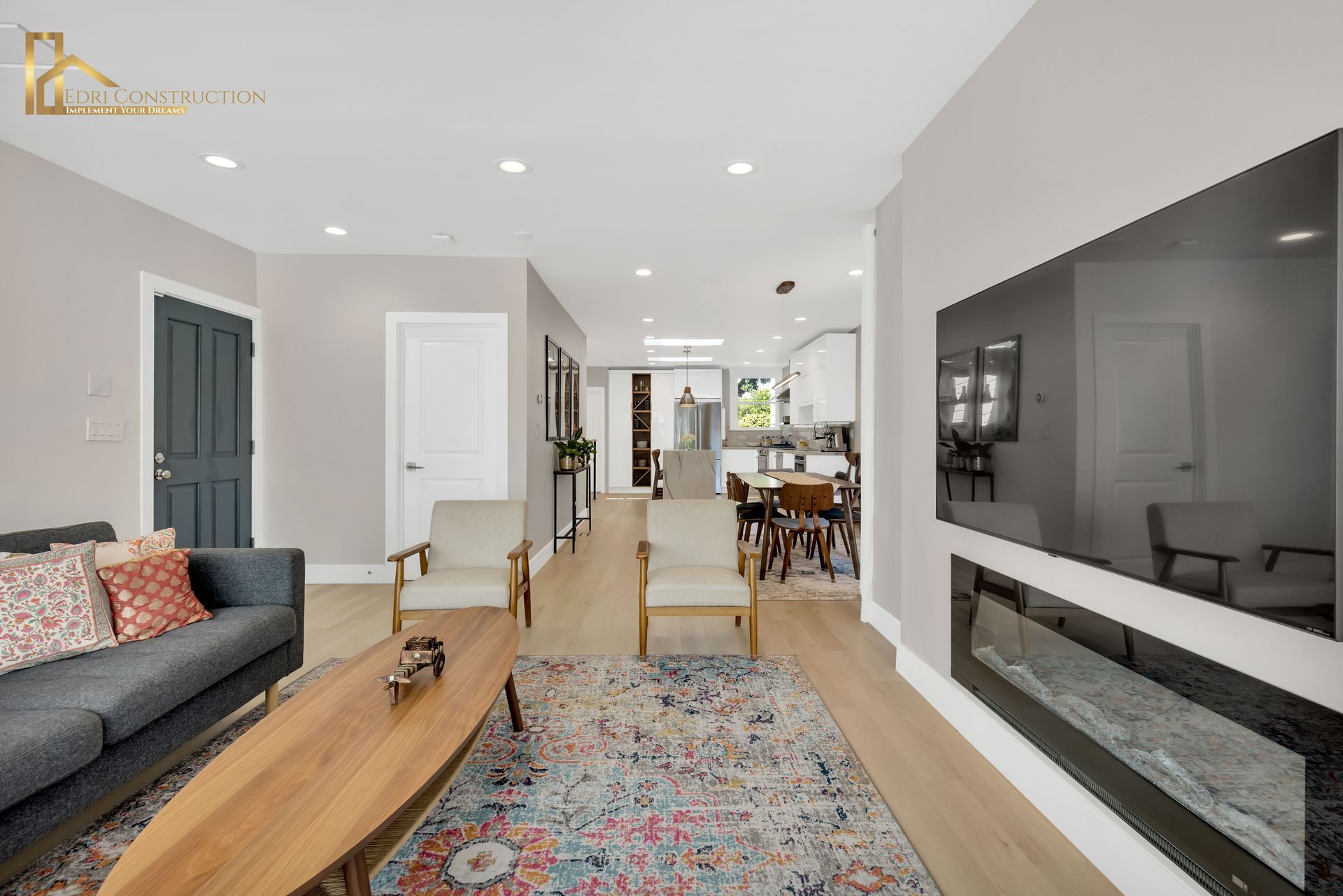
One of the key ways aging-in-place features enhance quality of life is by promoting comfort and convenience. Thoughtful design elements, such as adjustable countertops, curbless showers, and lever-style door handles, prioritize ease of use and accessibility, making daily tasks more manageable for individuals of all ages and abilities. These features allow homeowners to navigate their living spaces with greater freedom and confidence, enhancing their overall sense of well-being.
For example, adjustable countertops can be raised or lowered to accommodate individuals who are seated or standing, making meal preparation and other kitchen tasks more comfortable and ergonomic. Similarly, curbless showers eliminate the need to step over a high threshold, reducing the risk of slips and falls while providing a seamless, spa-like bathing experience. And lever-style door handles are easier to operate than traditional knobs, particularly for those with arthritis or other hand mobility issues, ensuring that every aspect of the home is designed with the user's comfort and convenience in mind.
Moreover, aging-in-place features can help individuals maintain their independence and autonomy as they age. By providing a supportive and accessible environment, homeowners can continue to perform daily tasks and activities without relying on assistance from others. This not only fosters a sense of self-reliance and empowerment but also preserves individual dignity and freedom of choice.
Additionally, aging-in-place features can contribute to emotional well-being by allowing individuals to remain in familiar surroundings and close to loved ones as they age. For many people, the thought of leaving their longtime home can be distressing, leading to feelings of loss and disconnection. By creating a safe, comfortable, and accessible living environment, homeowners can age in place with confidence, knowing that they can continue to enjoy the comforts of home while maintaining their social connections and support networks.
Personalized Design Solutions
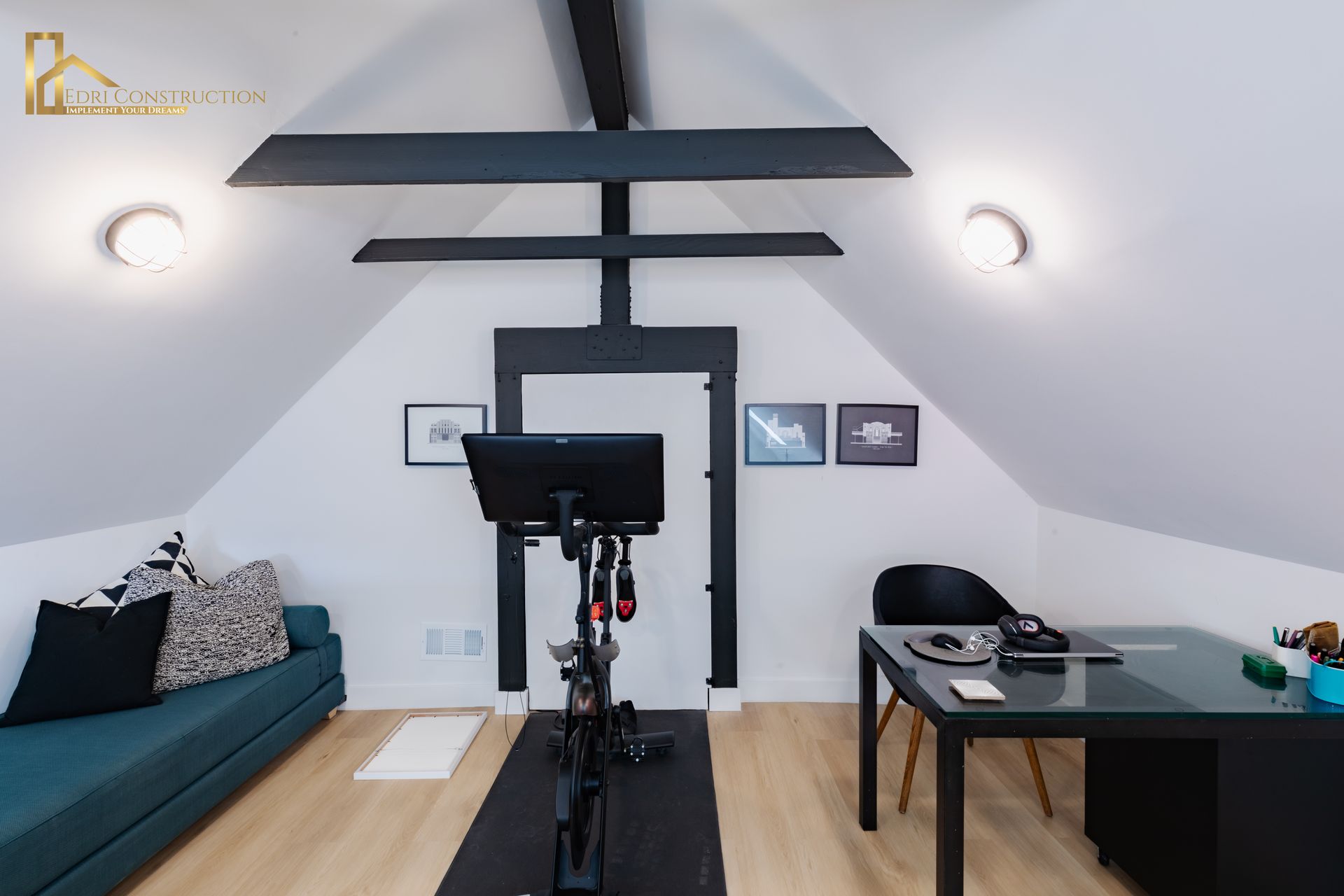
Contrary to common misconceptions, incorporating aging-in-place features into home remodeling doesn't mean sacrificing style or aesthetics. In fact, many of these features seamlessly blend with modern design trends, offering a harmonious marriage of form and function. From stylish grab bars to elegant yet slip-resistant flooring options, homeowners can personalize their spaces while prioritizing safety and accessibility.
One of the biggest myths surrounding aging-in-place remodeling is that it will result in a dull or institutional-looking home. However, the reality is quite the opposite. With advances in design and technology, aging-in-place features have evolved to become sleek, stylish, and seamlessly integrated into contemporary interiors.
Take grab bars, for example. While traditional grab bars may conjure up images of sterile hospital bathrooms, modern versions are available in a wide range of styles and finishes to complement any decor. From brushed nickel to matte black, homeowners can choose grab bars that blend seamlessly with their existing fixtures and hardware, adding a touch of elegance to the space while providing essential support and stability.
Similarly, slip-resistant flooring options have come a long way in terms of both aesthetics and functionality. Gone are the days of unsightly rubber mats or industrial-grade flooring. Today, homeowners can choose from a variety of stylish options, including luxury vinyl, textured tile, and even hardwood with a non-slip finish. These flooring choices not only enhance the visual appeal of the space but also provide added safety and peace of mind, particularly in high-traffic areas like bathrooms and kitchens.
Sustainability and Environmental Benefits
One of the key ways aging-in-place remodeling can contribute to sustainability is through the use of renewable building materials. Instead of relying solely on traditional materials like concrete and hardwood, homeowners can choose eco-friendly alternatives such as bamboo flooring, recycled glass countertops, and reclaimed wood accents. Not only are these materials more environmentally friendly, but they also add a unique and stylish touch to the home's interior.
In addition to using sustainable materials, aging-in-place remodeling presents an opportunity to incorporate energy-efficient solutions that help reduce energy consumption and lower utility bills. For example, installing energy-efficient appliances can significantly reduce the home's carbon footprint while also saving money on electricity and water bills. Similarly, upgrading to LED lighting fixtures and installing programmable thermostats can further optimize energy usage and improve overall efficiency.
Furthermore, integrating smart home technologies into aging-in-place remodeling projects can enhance sustainability while also improving convenience and comfort. Smart thermostats, for instance, can learn the homeowner's preferences and adjust heating and cooling settings accordingly, reducing energy waste and optimizing comfort levels. Similarly, smart lighting systems can be programmed to turn off lights in unoccupied rooms, saving electricity and reducing environmental impact.
Beyond materials and energy efficiency, aging-in-place remodeling can also promote sustainability through thoughtful design choices that prioritize natural light and ventilation. By incorporating large windows, skylights, and strategically placed vents, homeowners can reduce the need for artificial lighting and air conditioning, further lowering energy consumption and promoting a healthier indoor environment.
How to Get Free Home Remodeling Assistance
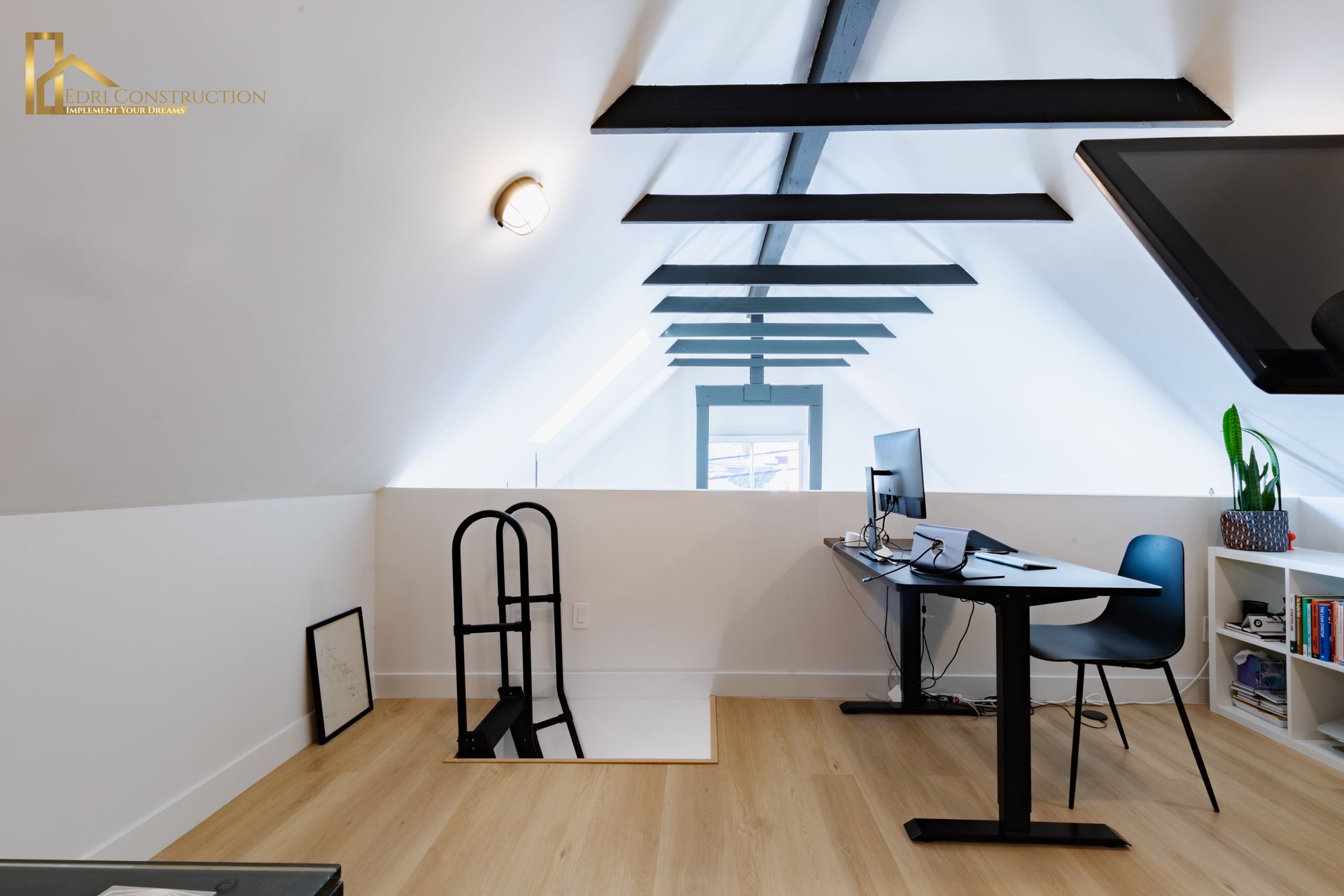
While home remodeling can be a worthwhile investment, it's understandable that some homeowners may face financial constraints. However, there are several avenues to explore for free or subsidized remodeling assistance:
- Government Assistance Programs: Many government agencies offer grants or low-interest loans for home modifications aimed at improving accessibility for seniors and individuals with disabilities.
- Nonprofit Organizations: Several nonprofit organizations provide free or discounted remodeling services for eligible homeowners, often through volunteer-driven initiatives.
- Community Resources: Local community centers, senior centers, and aging-in-place networks may offer resources and support for homeowners seeking assistance with remodeling projects.
- Financing Options: Some contractors offer financing plans or payment assistance programs to help homeowners manage the costs of remodeling projects over time.
By exploring these options and leveraging available resources, homeowners can make aging-in-place remodeling more accessible and affordable.
Conclusion
As the demographic landscape continues to evolve, so too must our approach to home remodeling. Aging-in-place features offer a myriad of benefits that extend far beyond mere aesthetics, prioritizing safety, accessibility, and comfort for individuals of all ages. By embracing these features in home remodeling projects, homeowners can create spaces that adapt to their evolving needs, promoting independence, and enhancing quality of life for years to come. So, whether you're embarking on a major renovation or considering minor updates, remember to prioritize aging-in-place features—it's an investment in the future that's worth every penny.
Frequently Asked Questions About Aging-in-Place Features in Home Remodeling
What are aging-in-place features?
Aging-in-place features refer to design elements and modifications incorporated into homes to make them more accessible and comfortable for individuals as they age. These features aim to promote independence, safety, and convenience, allowing homeowners to remain in their homes for as long as possible.
Who can benefit from aging-in-place features?
While aging-in-place features are often associated with seniors, they can benefit individuals of all ages, particularly those with mobility issues or disabilities. By prioritizing accessibility and safety, these features enhance the livability of homes for everyone.
What are some common aging-in-place features?
Common aging-in-place features include grab bars in bathrooms and showers, lever-style door handles, widened doorways, slip-resistant flooring, adjustable countertops and cabinets, curbless showers, and ramps or stairlifts for multi-level homes.
Do aging-in-place features sacrifice style or aesthetics?
No, aging-in-place features can be seamlessly integrated into modern design aesthetics. Many manufacturers offer stylish options for grab bars, slip-resistant flooring, and other accessibility features, allowing homeowners to maintain the aesthetic appeal of their homes while prioritizing safety and functionality.
How can I finance aging-in-place remodeling projects?
There are several financing options available for aging-in-place remodeling projects. These include government assistance programs, nonprofit organizations offering free or discounted services, financing plans from contractors, and personal loans or home equity lines of credit.
Are there government programs available to help with aging-in-place remodeling?
Yes, many government agencies offer grants or low-interest loans for home modifications aimed at improving accessibility for seniors and individuals with disabilities. These programs vary by location, so it's advisable to research available resources in your area.
How do I find a contractor experienced in aging-in-place remodeling?
To find a contractor experienced in aging-in-place remodeling, consider asking for recommendations from friends, family, or local aging-in-place networks. You can also search online directories or platforms specializing in home remodeling to find contractors with relevant experience and positive reviews.
Can I incorporate aging-in-place features into small homes or apartments?
Yes, aging-in-place features can be tailored to suit homes of all sizes, including small houses or apartments. Design solutions such as compact grab bars, space-saving shower seats, and adjustable furniture can help maximize accessibility and comfort in smaller living spaces.
How can I ensure that my aging-in-place remodel is environmentally friendly?
To ensure that your aging-in-place remodel is environmentally friendly, consider using sustainable building materials, energy-efficient appliances, and smart home technologies that optimize energy usage. Consulting with a green building professional can help you make eco-conscious choices throughout the remodeling process.
Are there community resources available to assist with aging-in-place remodeling projects?
Yes, local community centers, senior centers, and aging-in-place networks often offer resources and support for homeowners seeking assistance with aging-in-place remodeling projects. These resources may include educational workshops, informational materials, and referrals to reputable contractors or service providers.
